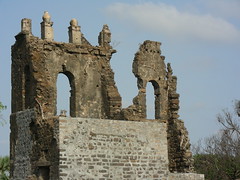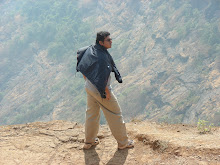Planning: To tour Hong Kong, you need not take help of any of the tourism travel companies. No holiday packages needed. The Hong Kong Tourism Board (HKTB) has a very good interactive website, which allows you to plan as per your needs.
Click here to visit the website. The website has a whole lot of information to make your stay and sight seeing in Hong Kong a comfortable one.
Travel: Of course, you will travel by plane. To and fro tickets to Hong Kong (from metros in India) are cheap enough and can be purchased at reasonable prices even two weeks before your journey. The best airlines to travel: Cathay Pacific and Air India.
 |
| Nathan Road, Tsim Sha Tsui |
Stay: As far as possible, try and stay in hotels near Tsim Sha Tsui in Kowloon. The reason: This is where most of the tourist spots are located. So, you will not spend too much time travelling to the tourist destinations. If you are looking for guest-house style accommodations (low-cost, youth hostels), then
Chungking Mansions is the place to look out for. It has around 80 guest houses. Note that all guest houses may not have a website, so online booking is out of question for some of these. I stayed at
Ashoka Hostel, which is decent enough for single travellers, as well as young couples. But be a little careful, as shady characters are seen lurking around Chungking Mansions. Inside the rooms is safe, as there are double locks to enter the premises. Try and book accommodations through third party websites, to avail discounted rates, which are generally not mentioned on the hotel's website.
 |
| The Buddha at Lantau |
Cash and currency: In Hong Kong, most budget hotels do not accept credit cards. You will have to pay cash in HK$. But do not worry. Carry around HK$ 200-300 from India. Money changing shops are a common sight in most tourist places in Hong Kong. You can carry Indian rupees, and get them exchanged for HK$ at these shops. It is a good idea to roam around a few shops, before deciding to exchange your money. It allows you to decide the best exchange rate for you. Even banks in designated areas will help you exchange currency.
What to see: While the HKTB board allows you to build your own itinerary, you should not miss a few things in Hong Kong. Do visit the Ngong Ping on Lantau islands and the Buddha statue there. It is a magnificent site to be there. Travel to the top either by their ropeway, or by the buses available there. Either way is simply enchanting. Also, after landing in Hong Kong, do not forget to visit the HKTB office, which you will find at major tourist locations. They will help you tailor an itinerary, so that you can make best use of your time. And, do not forget to take a map of Hong Kong from there, it will be useful during your stay.
 |
| Bruce Lee |
The ferry ride is another good option, if you want to see parts of Hong Kong and how did the city's sea traffic evolve. Take a Harbour Tour with
Star Ferry on a afternoon to see different parts of Hong Kong. In the evening, do not miss the Symphony of Lights show, which is held every single night along the Hong Kong harbour. the best place to watch the show is from the Kowloon side, in front of the Avenue of Stars. After the show, get pictures clicked with Bruce Lee, at the Avenue of Stars.
What and where to eat: Food, might be a slight problem if you are a vegetarian. You might not like the Cantonese restaurants, because it is very difficult to spot the differences between various meats. Chinese people eat various kinds of meats, ranging from chicken to pork, sometimes even donkey meat (that's true, I've seen it on the menu of a luxury resort). As is common in foreign countries, Indian restaurants are generally quite expensive. But, you can find a lot of Subway outlets in Hong Kong and Kowloon districts. And fortunately, Subway does serve vegetarian sandwiches as well as non-beef/pork ones. Indian restaurants are there by the plenty, lined up along Temple Street in Kowloon district. If you walk along Temple Street in the evenings, you will find a plenty of South Asian origin people (Indian, Pakistani, Bangladeshi, Nepali and Lankans) handing out pamphlets and inviting you to have food at their restaurants. There is no harm in collecting these. You can decide if you want to dine there or not, and you also get a choice. Remember, McDonald's and Pizza Hut do not have vegetarian food on their menu. Pizza Hut has only one vegetarian pizza and it might not fill you nicely.



